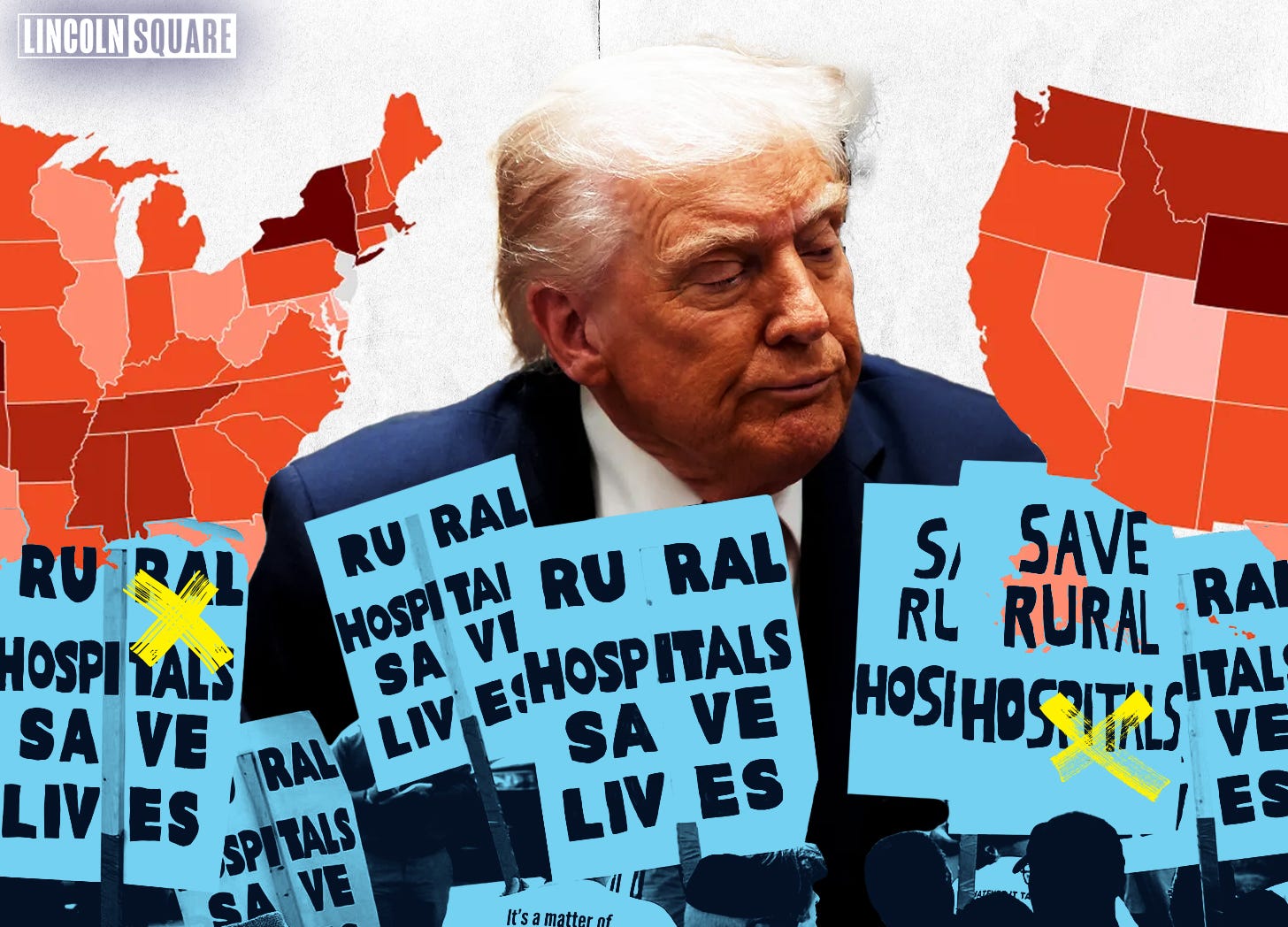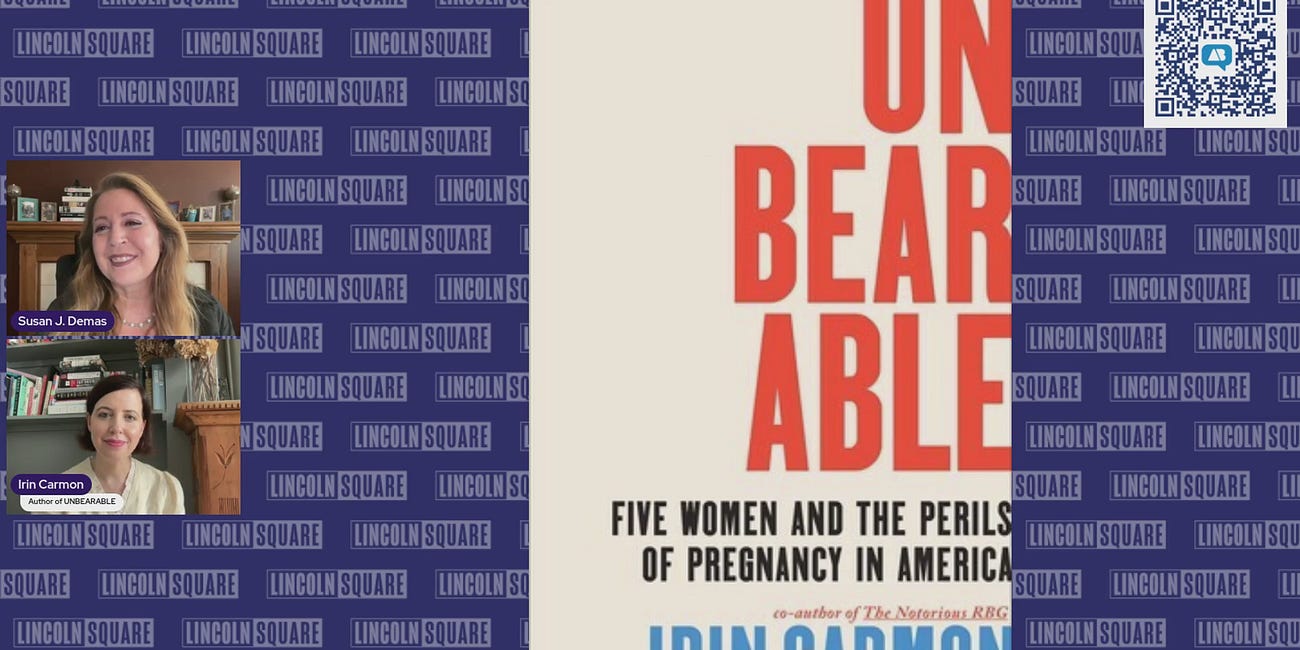Rural Hospitals in the United States Face Collapse
As Medicaid cuts deepen, small-town hospitals across Republican states are closing, leaving millions without access to emergency care.
By Brian Daitzman
Between 2005 and 2023, 146 rural hospitals across the United States either closed completely or converted away from inpatient care, according to federal data. Nearly half of the rural facilities that remain now operate at a loss, the American Hospital Association reports. As new federal budget cuts take effect, analysts warn that hundreds more may follow, threatening to turn vast stretches of the country into health-care deserts.
At the center of this growing crisis lies a rollback in federal health-coverage spending. Nonpartisan analyses show large Medicaid reductions over ten years; according to KFF’s synthesis of Congressional Budget Office scoring, the total is on the order of eight to nine hundred billion dollars for Medicaid and roughly 1.1 trillion when combined with Affordable Care Act coverage changes.
The legislation passed with near-unanimous Republican support and broad Democratic opposition, according to official roll-call votes. These cuts fall hardest on hospitals that depend on Medicaid to survive. Nearly half of all rural facilities already operate in the red, and analysts at the University of North Carolina’s Sheps Center and the Chartis Center for Rural Health identify roughly 300 rural hospitals as financially vulnerable to closure or conversion.
The administration’s $50 billion Rural Health Transformation Fund — sold as a lifeline — would offset only about thirty-seven percent of the estimated $137 billion in rural-area Medicaid reductions and roughly five percent of total Medicaid cuts. What reads as fiscal prudence in Washington translates into layoffs, diverted ambulances, and wards gone dark in the heartland.
On television, Representative Mike Flood of Nebraska said small hospitals would “transition” into stand-alone emergency rooms — a lawmaker’s euphemism for abandonment.
His remark, made on MSNBC’s Morning Joe on October 9, 2025, captured the governing mood: Acknowledge the pain, rename it adaptation, and move on. Still, a few Republican officials have publicly acknowledged the strain on rural access, noting that when hospitals close, families lose a vital lifeline. That lifeline is the thread binding health to geography, because Medicaid sustains not only patients but also the economic gravity of entire towns.
In many counties, Medicaid finances nearly half of all births and a significant share of children’s medical care, as well as most nursing-home residents. Pull that reimbursement stream and local balance sheets collapse overnight. The first casualties are maternity wards, followed by surgical units and finally the emergency departments that hold communities together after midnight crashes and heart attacks.
After hospital closures, residents travel on average 10 to 20 minutes longer to reach emergency care, according to studies by the U.S. Government Accountability Office and Health Affairs. Clinical meta-analyses in Circulation and Stroke show that mortality risk rises several percentage points for every ten-minute delay, depending on the condition. Geography again becomes fate, echoing an earlier century when distance alone could decide survival.
For women, the retreat is equally stark. More than one-third of U.S. counties are now maternity-care deserts, defined by the March of Dimes as counties lacking hospital-based obstetric services.
The closures ripple outward through local economies because hospitals are usually the anchor employer and purchaser in a small-town marketplace.
Beyond Abortion: How Dobbs has Created a Crisis in Maternal Health | Author Irin Carmon Joins Susan J. Demas
A lot of the discussion of reproductive health rests on a false dichotomy: Good women give birth and bad women have abortions.
A 2023 study by the U.S. Department of Agriculture’s Economic Research Service found that, in affected rural counties, average household income fell 2 percent and unemployment rose 1 percentage point within two years of a hospital closure. Local businesses — from pharmacies to diners to hardware stores—follow the same downward trajectory, draining not only cash flow but civic rhythm.
The social toll compounds the financial one.
As young families depart, elders face illness and isolation without nearby care. Some public-health studies, including analyses in the Journal of Rural Health and CDC surveillance data, have found associations between hospital closures and higher local rates of depression and preventable mortality.
These statistics form the vocabulary of grief: policy rendered in lost minutes, lost jobs, and lost lives.
Politically, the geography of decline is stark. Many of the hardest-hit regions are in states that rejected or limited Medicaid expansion — Texas, Kentucky, Alabama, Nebraska — deepening their exposure when federal support recedes. The emerging “health-desert belt” overlaps much of the Republican electoral heartland. Even if new funds trickle in later, they cannot replace the trust drained when residents sense their decline has been budgeted in advance.
Analysts at the Sheps and Chartis Centers project that hundreds — potentially 300 to 400—rural facilities could close or convert over the next decade if trends continue, echoing the factory shutdowns that hollowed out these same towns a generation ago.
Health economists warn that continued closures could leave many areas dependent on small urgent-care centers with limited services and higher out-of-pocket costs—urban medicine for the insured, constrained triage for everyone else.
Unless Congress restores the arteries of rural care, the quiet extinction of these hospitals will mark the moment the country accepted inequity as normal and watched its heart stop in slow motion.
Brian Daitzman is the Editor of The Intellectualist. Read the original article here.
References
Edith Olmsted, “GOP Rep Says Rural Areas Will Just Have to Deal With Hospitals Closing,” The New Republic, Oct 9 2025. https://newrepublic.com/post/201546/donald-trump-budget-gop-rep-rural-hospitals
PBS NewsHour, “What Does the Rural Health Fund in Trump’s Megabill Do?” Oct 7 2025. https://www.pbs.org/newshour/health/what-does-the-rural-health-fund-in-trumps-megabill-do
FactCheck.org, “Rural Health Fund Falls Short of Estimated Medicaid Cuts,” Sept 26 2025. https://www.factcheck.org/2025/09/rural-health-fund-falls-short-of-estimated-medicaid-cuts/
American Hospital Association, “Rural Hospitals at Risk,” June 13 2025. https://www.aha.org/fact-sheets/2025-06-13-rural-hospitals-risk-cuts-medicaid-would-further-threaten-access
UNC Sheps Center / Chartis Center for Rural Health, “Rural Hospitals at Risk,” Oct 2025. https://www.chartis.com/resources/2025-rural-hospitals-at-risk
University of Minnesota Rural Health Research Center, “Loss of Hospital-Based Obstetric Services in Rural Counties in the United States (2010–2022),” July 10 2024. https://rhrc.umn.edu/publication/loss-of-hospital-based-obstetric-services-in-rural-counties-in-the-united-states-2010-2022/
U.S. Government Accountability Office, “Rural Hospital Closures: Affected Residents Had Reduced Access to Services,” GAO-21-93, Jan 2021. https://www.gao.gov/assets/gao-21-93.pdf
National Institute of Health, “Patient Delay and Ischemic Stroke Prognosis: A Systematic Review and Meta-Analysis”, (June 19, 2025) .
U.S. Department of Agriculture Economic Research Service, “Economic Effects of Hospital Closures on Rural Communities,” June 2022.
Journal of Rural Health, “Mental Health Consequences of Rural Hospital Closures in the United States,” Vol 40 No 4, 2024. https://onlinelibrary.wiley.com/doi/10.1111/jrh.12810
KFF, “A Closer Look at the $50 B Rural Health Fund in the New Reconciliation Law,” Aug 2025. https://www.kff.org/medicaid/a-closer-look-at-the-50-billion-rural-health-fund-in-the-new-reconciliation-law/
March of Dimes, “2024 Maternity Care Deserts Report.” https://www.marchofdimes.org/peristats/reports/united-states/maternity-care-deserts
Time Magazine, “Why Rural Hospitals Are Closing — and What Can Be Done,” July 2025. https://time.com/7298891/rural-hospitals-closing-explained-health-care/







There is a social and economic crisis in this country! Humor Dumpty! will perhaps not understand what he has done to this country! Besides who wears a mask back wards on an A. I video! This was disrespectful and disgusting!Good article! Healthcare is a human right in our country! Not a political party right but ours! Abortion is a right for families and whomever the speak with no one has the right to interfere or Judge anyone in this matter!
Flush Cheeto And His Nazi Allies: Victimhood
One of the main political ploys that the Nazis use in manipulating the MSM(mainstream media) is victimhood As the saying goes “poor me, poor me, look how they persecute me/us”
Sounds like it’s right out of the New Testament doesn’t it? It’s part of the Christian Nationalist movement of politicizing Christian teachings for their own benefit Let’s be clear, victimhood has always been part of being a Nazi since the 1980’s when they found that if they cried foul often enough that the American electorate would come around and say, “you poor thing, look what they’re doing to you/us”
Now Cheeto routinely plays the victim card They tried to assassinate me and/or Charlie Kirk without any introspection about “hmmm, maybe I stand for something people don’t like” But in actuality it gave Cheeto and the Nazis a chance to really play the victim(s) So when we see Cheeto becoming indignant for people questioning him it’s actually just a façade for victimhood, a well honed and perfected strategy that has taken years to deceive the American electorate as the Nazis work to control the government